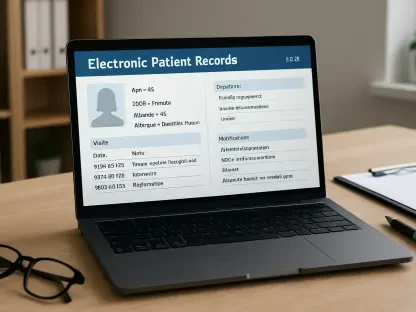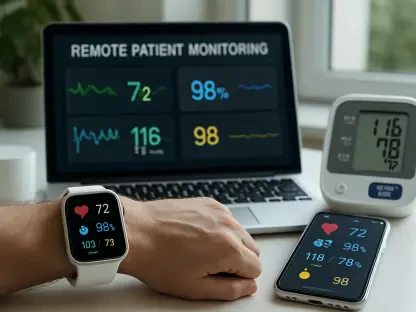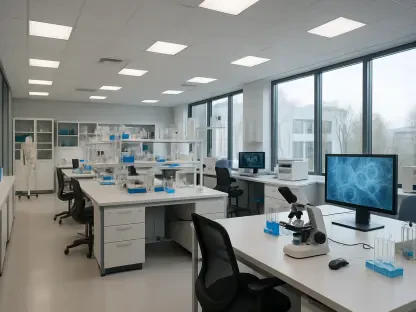In a rapidly evolving healthcare landscape, telehealth has emerged as a transformative tool, promising to bridge gaps in access to medical services, especially for those in remote or underserved areas, but beneath the surface of this innovation lies a deeply contentious issue: the provision of abortion services through virtual platforms. Marketed as a lifeline for women facing restrictive state laws, particularly those with limited financial means, telehealth abortion services have sparked intense debate over their safety and ethical implications. Providers distribute pills like Mifepristone and Misoprostol across all 50 states, often sidestepping local regulations. While advocates argue this offers critical access, critics highlight alarming risks, painting a picture of a system that may prioritize convenience over comprehensive care. This complex intersection of technology, law, and women’s health demands a closer look at whether such services genuinely protect the most vulnerable or expose them to unforeseen dangers.
Examining the Promises and Perils of Virtual Abortion Care
Accessibility Versus Oversight: A Double-Edged Sword
The rise of telehealth abortion services has been framed by some as a groundbreaking solution for women in states with stringent restrictions on reproductive healthcare. These platforms, often operating as non-profits, aim to provide a discreet and affordable option by mailing abortion pills directly to patients, bypassing the need for in-person clinic visits. For low-income women, who may struggle with travel costs or time off work, this model appears to dismantle significant barriers. Proponents argue that it empowers individuals to make autonomous decisions about their bodies, especially in regions where clinics are scarce or heavily regulated. However, the absence of physical medical evaluations, such as ultrasounds or in-person consultations, raises serious concerns. Without these safeguards, underlying conditions like ectopic pregnancies can go undetected, potentially leading to life-threatening complications. The tension between expanding access and ensuring safety remains a critical point of contention in evaluating this practice.
Health Risks Hidden Behind Convenience
Beyond the appeal of accessibility, telehealth abortion services often lack the follow-up care necessary to address complications that can arise from chemical abortions. Studies cited by critics reveal a troubling trend: up to 4.6% of women using Mifepristone require emergency room visits due to adverse effects like severe bleeding or infection. Peer-reviewed research further indicates a significant spike in such incidents over recent years, challenging the narrative that these pills are as safe as everyday medications. The reality for many women, especially those without easy access to emergency care, can be harrowing. Without a healthcare provider to monitor their condition or intervene when needed, patients are left to navigate intense physical and emotional challenges alone. This gap in care disproportionately affects economically disadvantaged individuals who may not have the resources to seek timely help, turning what is marketed as a simple solution into a potential health crisis.
Legal and Ethical Challenges in Telehealth Abortion Practices
Shield Laws and the Accountability Gap
One of the most debated aspects of telehealth abortion is the legal framework that enables providers to operate across state lines with minimal accountability. In states like California and New York, so-called shield laws protect out-of-state providers from prosecution when they mail abortion pills into areas with restrictive policies. While these laws are intended to preserve access to reproductive care, they also create a troubling loophole. Providers can distribute medications without fear of legal repercussions, even if severe complications arise for the patient. This setup often leaves women, particularly those in vulnerable economic situations, without recourse when things go wrong. Hemorrhage, incomplete procedures, and other serious issues can occur, yet the distant provider remains insulated from responsibility. This systemic protection of providers over patients fuels arguments that the current model prioritizes business interests over genuine healthcare.
Exploitation Under the Guise of Empowerment
The ethical implications of telehealth abortion services extend beyond legal protections to the very way these services are marketed to vulnerable populations. Often presented as a form of empowerment, the practice can feel more like abandonment for those who experience traumatic outcomes. A documented case in Texas highlights this stark reality: a woman, after taking mailed abortion pills without prior medical screening, endured the unimaginable trauma of delivering a live baby alone, only to watch it pass away. Such stories, drawn from court records, underscore the profound emotional and physical toll that can accompany a lack of in-person oversight. For low-income women, the promise of help can quickly unravel into isolation when complications strike and no support system is in place. Critics argue that this model exploits desperation, offering a quick fix while disregarding the long-term well-being of those it claims to serve.
Moving Toward Safer Alternatives for Women’s Health
Reflecting on Past Failures to Inform Future Protections
Looking back, the rapid expansion of telehealth abortion services revealed a critical disconnect between the promise of access and the reality of care. Harrowing personal accounts and mounting statistical evidence exposed how the absence of medical oversight led to severe health risks for many women, particularly those in economically challenged circumstances. Legal mechanisms that shielded providers from accountability often left patients to bear the burden of complications alone, highlighting a system that frequently failed to prioritize safety. The emotional and physical scars borne by individuals who trusted in a seemingly simple solution served as a sobering reminder of the stakes involved. These past challenges underscored the urgent need for reforms that balanced accessibility with robust protective measures, ensuring that no woman was left to navigate such profound decisions without adequate support.
Building a Framework for Genuine Care
Moving forward, addressing the shortcomings of telehealth abortion services demands a commitment to comprehensive healthcare solutions. Policymakers and medical professionals should focus on integrating mandatory in-person evaluations or virtual consultations with clear follow-up protocols to mitigate risks. Strengthening regulations to hold providers accountable, even across state lines, could close existing loopholes and ensure that women receive consistent care regardless of their location. Additionally, expanding access to local clinics or mobile health units for low-income communities might offer a safer alternative to mailed medications. Investing in education about reproductive health options and emergency resources can further empower individuals to make informed choices. By prioritizing both safety and access, the healthcare system can evolve to protect vulnerable populations, turning past lessons into actionable steps for a more compassionate and responsible approach to women’s health.









